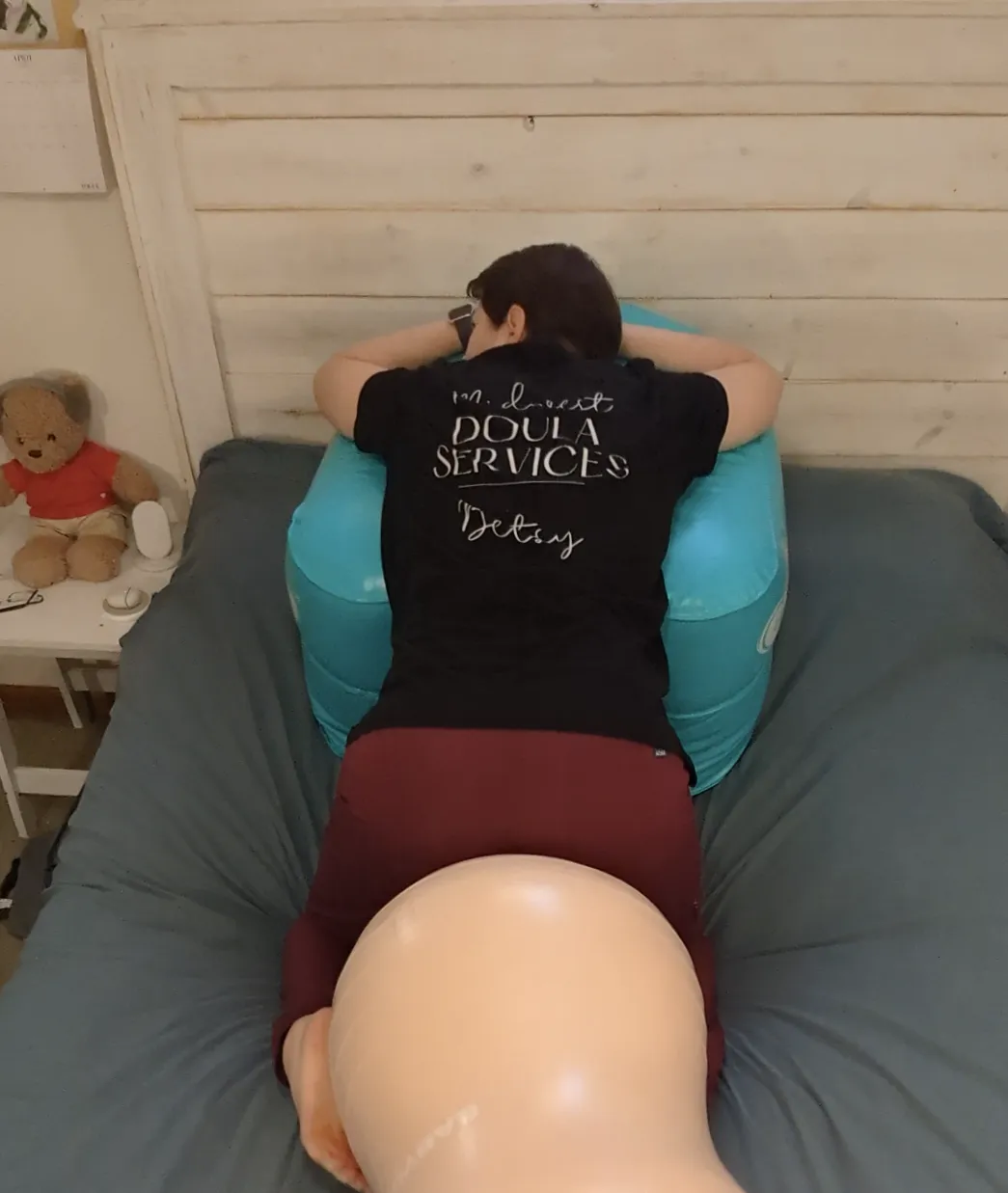
4 Things I Learned From My Last Birth as a Doula
As a birth doula, I'm always taking detailed notes during labors with my clients, hoping to grow in my practical, hands-on skills, and observational skills and therefore be a better doula for the next birth.
Another benefit of taking detailed notes, is that I use these notes to write a detailed birth story to gift to my clients afterwards.
Having given birth 4 times myself, I know that time is weird in birth and when you are in the thick of active labor, you are rightly focused inward and just instinctively move through labor. So you are not always aware of what is happening around you, who is supporting you, and HOW you got through labor.
Let me share 4 things I learned from my last birth that might benefit YOU as you look forward to your own birth.
1. The benefit of releasing your Psoas muscle in labor.
My client was at the hospital for an induction, so she had already been at the hospital for a bit before I arrived. She was on Pitocin and so even though she was still at the beginning of the process of labor, her contractions were frequent and intense.

So I suggested she do the Standing Psoas Release as we caught up. I share how to do that move here.
As soon as my client started the movement of swinging her leg, she said immediately that it just felt good. After swinging one leg for about 1 minute, she switched to the other side. Then, after a contraction, she repeated the release on both sides a second time.
The contractions immediately following the Psoas Release were less painful and easier to deal with.
I haven't typically suggested this move this early in our time at the hospital, but I will from here on out!
Why is this move so powerful? Because ⤵️
The Psoas muscle is tied to the body’s fight or flight response. When you physical release the tension in this muscle, an emotional release often follows.
If you tend to be stressed in the hospital setting, or anxious about your birth, this stress is going to cause your Psoas to be in a tightened state. We don't want that in labor. Your baby needs SPACE to move down.
You can think of the Psoas Release as a much needed physical and emotional "reset" during labor.
2. Don't underestimate the power of water therapy in labor!
After we did the Psoas Release and she walked around a bit, I noticed my client kind of quickly moved into the part of active labor where the contractions were getting to be stronger than she expected. I could tell she was getting overwhelmed.
I suggested she get in the bath, which was EXACTLY what she needed.
➡️ Later, at my postpartum visit with her, she said that she would have stayed in bed if I didn't suggest the bath and then ALSO take the step of calling the nurse in to switch up the method of monitoring.
The bath was EXACTLY what she needed right then because we set up the bathroom with music, dim light, and her partner right there next to her. It helped her body relax through the contractions, and she was then able to mentally get ahead of the pain so it was not so overwhelming for her.
Get in the bath or shower. Even if you have to advocate for it and it feels like you are "bothering" the nurse. You are not, and getting in the bath is SO worth it!
3. The CUB has become my favorite tool to use in supporting an upright, efficient and yet restful birth!

When my client got out of the tub, she didn't want to just lay on the bed right away, so I suggested using the CUB (which is just an inflatable U shape birth stool). CUB stands for Comfortable, Upright Birth support and that is exactly what it is.
I often suggest it for my clients when they want to be on hands and knees, but have their upper body supported and not have all the weight on their arms.
In this case, my client was standing next to the bed, and then resting her upper body on the CUB which was at the edge of the bed.
It was a perfect support because it was a flat surface, and yet it had some give to it, so she could easily rock back and forth during a contraction when needed.
The CUB works because it promotes a restful, upright position AND allows for movement!
4. Waiting until baby is LOW, at +2 station is a good call!
My client truly had very few cervical checks (3 her entire labor), so I had the opportunity to practice my "labor detective skills" as Lindsay McCoy calls it. I can make an educated guess where baby is in the pelvis based on:
observing the mom's movements in labor,
listening to see if she was vocalizing during contractions,
figuring out what comfort measures and hands-on support she liked at the time,
asking where she felt the pain and if she felt any pressure

I LOVE how much more positive the conversation seems to been when there are NOT cervical checks done often. Because instead of the hospital staff focused on a number of how far dilated my client is, instead the conversation and focus is on how to make sure my client is comfortable and moving to progress labor.
At her first check while in labor, she was just 3cm dilated (which was 4 hours before she asked for an epidural to rest). When she asked for an epidural, I thought she was experiencing transition, but she didn't want the check.
After the epidural was in place and she was feeling relief, she chose to just rest (which getting rest was WHY she chose the epidural) and wait until she felt pressure to get a cervical check. So the hospital staff left us alone in the room so she could sleep.
Since I knew my client wanted the least cervical checks possible, when she woke up and said she felt some pressure, I didn't go running to get the nurse.
I knew that pressure would need to build to where she was feeling it not just at the peak of the contraction, but throughout the whole contraction. I knew we could wait until she was feeling the pressure not only during the contractions but an unrelenting pressure between the contractions as well. THAT would be the time to call the nurse.
When the midwife came in to do a cervical check, she said the my client was completely dilated and baby was at +2 station!! The midwife was shocked and started getting everything ready for delivery.
Can you believe it - since baby was SO LOW when my client started pushing, that it only took her 4 pushes (12 minutes) to give birth to her baby? It was amazing!!
_______
P.S. To be honest, I DID already know these main concepts. Each birth still teaches me more and more though. I get to see the core of what I know reflected in a different way, through a different labor.
